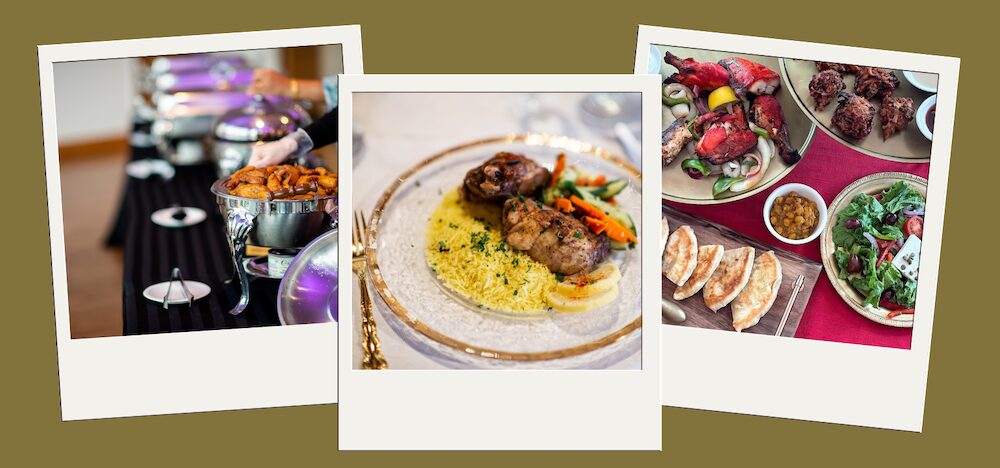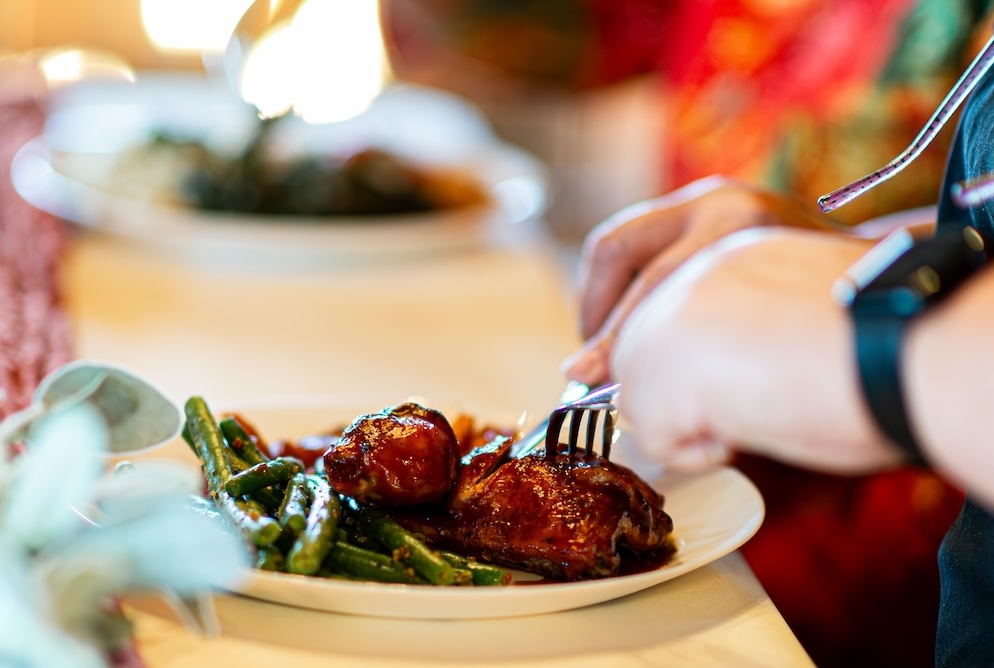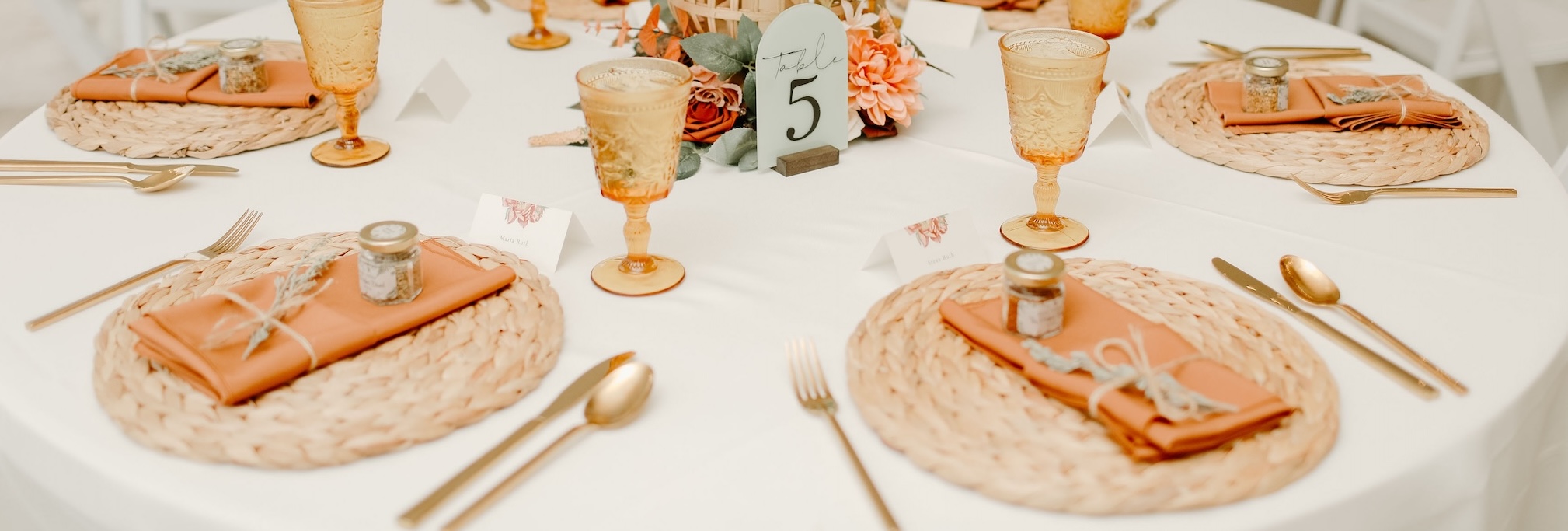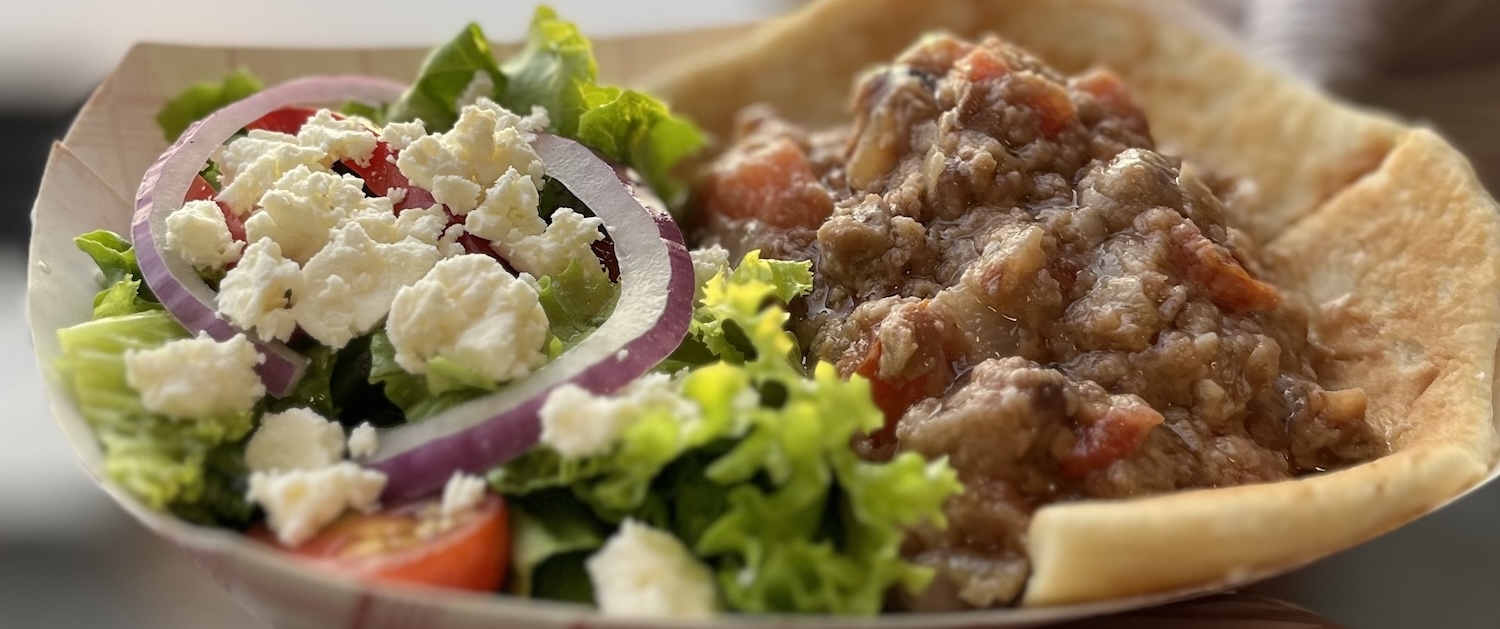What kind of ambiance do you have in mind for your event or reception: casual and fluid, intimate and social, or formal? The food service style you choose can help set the stage.
In this article, we describe three main service styles (buffet, family-style, and plated) along with the pros and cons of each, to help you decide which one might be right for your event.

1. Buffet Style Catering
In a buffet-style service, guests serve themselves from a spread of food set on one or more banquet tables or food stations. The food is typically arranged in chafing dishes, platters and bowls, allowing guests to pick and choose according to their preferences.
This service style works well for Upohar’s multicultural catering menus: it allows you to offer a wide variety of food to your guests, and it allows guests who may be unfamiliar with a particular dish to sample a bit first, and return for more if they like it.
Pros:
- Variety and Choice: Guests can sample a variety of dishes and serve themselves according to personal taste or dietary preferences.
- Self-Service: Guests don’t have to wait for a server to bring their food, which can reduce wait times, especially in large groups.
- Casual Atmosphere: Buffets often create a more relaxed, social environment where guests can move around, mingle, and go back for seconds.
- Cost-Effective: Depending on the food served, buffets are usually more budget-friendly, as they require fewer servers.
Cons:
- Overcrowding and Lines: If the buffet is not well-organized or there aren’t enough serving stations, guests may have to wait in line. To manage this, we recommend requesting a double-sided buffet, or even multiple buffets if necessary, and have your event coordinator dismiss tables one at a time to go up to the buffet.
- Food Waste: Guests may over-serve themselves, particularly with food they may not eat, leading to more waste.
- Less Control Over Portions: Since guests serve themselves, portions can be inconsistent, which may result in some guests getting too little while others overindulge. To address this, you can have the catering staff serve consistent portions to your guests as they go through the buffet line.
2. Family-Style
In family-style service, food is served in large dishes at each table and guests pass these around the table to serve themselves. Similar to a family meal at home, everyone shares food from the same set of serving dishes. Each table is served the same menu. This style of service can be used to create a sense of intimate gathering even within a large event where guests at each table can share a communal meal.
If you want to offer a diverse multicultural menu, but don’t want your guests to have to leave the table during the meal, this service style is a good option. Since each food item is served in a separate dish, guests can sample food that’s new to them, and take more if they like it.
Pros:
- Intimate and Social: The communal nature of family-style service encourages conversation and sharing, creating a warm, family-like atmosphere.
- More Control Over Portions: Unlike buffets, where guests might over-serve themselves, family-style allows guests to take only what they want, while still sharing the food in a more controlled manner.
- Cost-Effective: Family-style service can often be more affordable than plated meals, as it typically requires fewer staff and less preparation per individual guest. If you don’t want guests to get up from the table during the meal, this is a good option.
Cons:
- Space Limitations: Large platters and bowls require enough space on each guest table. In addition, a large staging area is needed to plate up all the food for all the tables, which could be a challenge for venues that lack a dedicated prep area for caterers.
- Portion Control: While guests have some control over what they take, there can still be the issue of uneven portions, especially if a dish runs out or if certain items are more popular than others.
- Food Waste: Because the same menu is served at each table, guests at some tables may not eat everything due to dietary preferences. This would leave extra food in the serving dishes at some tables.
- Cost: Although this is more affordable than plated meals, it still costs more than buffet service since you need a set of serving-ware for each table (vs. one set of serving-ware on the buffet) and more staff to serve all tables at the same time.
3. Plated Service
Plated service is the most formal food service style, where individual portions of food are prepared and served to each guest at their table. Each course, whether it’s an appetizer, entrée, or dessert, is delivered directly to the guest’s seat, typically by waitstaff. This is commonly seen in fine-dining restaurants and formal weddings, or business dinners. Plated meals are often pre-selected, with guests choosing their meal options in advance or as part of the event invitation.
This service style can work with multicultural menus. You may offer your guests 3 meal options to pre-select — for example, Greek Chicken Souvlaki, Puerto Rican Roast Pork, and Chinese Ma Po Tofu. However, each guest is served just their selection, and don’t get a chance to try all the other food.
Pros
- Presentation: Plated meals are carefully arranged and presented, making them ideal for more formal or upscale events.
- Consistent Portions: Every guest receives the same portion size, so there’s no concern about running out of a dish or uneven servings.
- Less Waste: Since guests don’t serve themselves, the food is portioned specifically for them, which reduces the likelihood of waste.
Cons
- Cost: Plated service is typically the most expensive option, as it requires more staff to serve, and more preparation per plate.
- Longer Wait Times: As each course is served individually, it can take longer for all guests to be served, especially at large events. This can lead to delays between courses.
- Limited Choice: Guests have fewer options compared to buffet or family-style meals, as the meal is pre-planned. Also, guests cannot change their mind and request a different meal at the event, especially if someone else’s plate looks more appealing!
Conclusion
Choosing the right food service style depends on the kind of experience and ambience you want to create for your guests, along with your event budget. Here’s a quick summary:
- Buffet: Ideal for large gatherings, casual events, or if you want to offer a wide variety of dishes and let guests serve themselves. Usually budget-friendly.
- Family-Style: Perfect for intimate, social events where you want a communal atmosphere and are serving larger groups in a more relaxed setting. More expensive than buffet service.
- Plated: Best for formal, upscale events where presentation, consistency, and quality service are top priorities. Most expensive.
Finally, consider if the menu you want to serve fits your desired service-style. No matter which style you choose, the key is to ensure that your guests enjoy their meal and the overall dining experience. Bon appétit!











